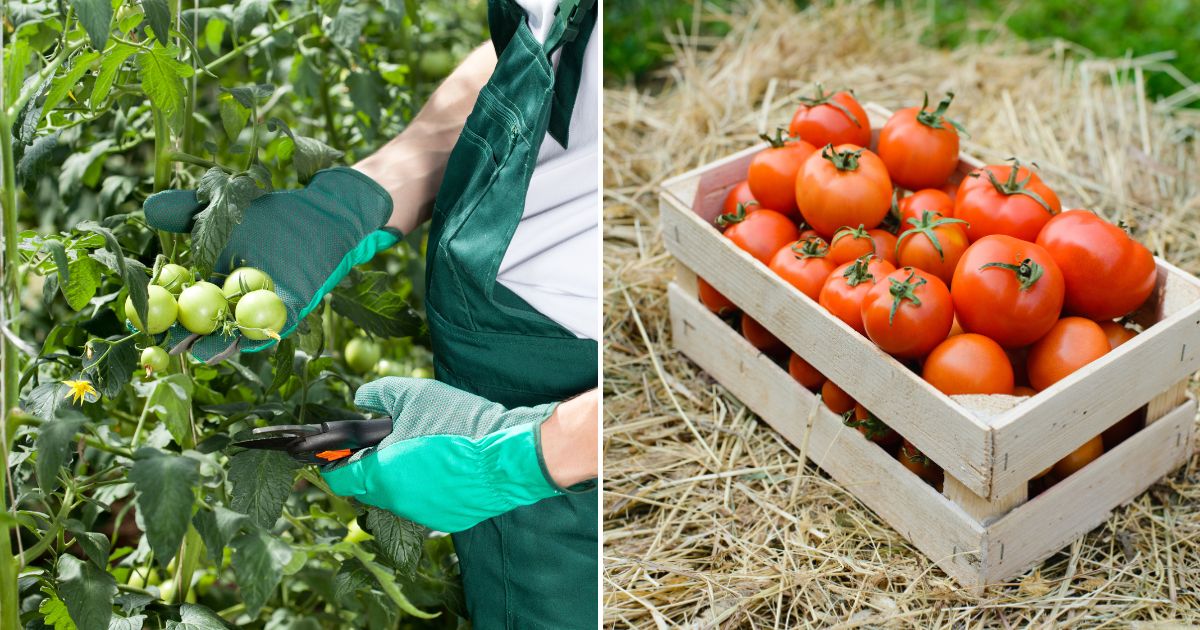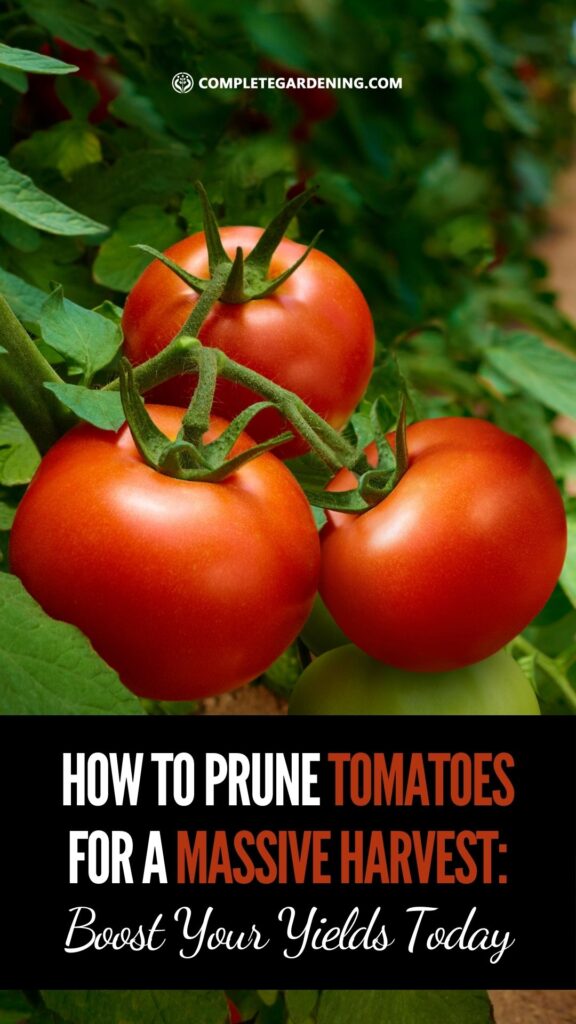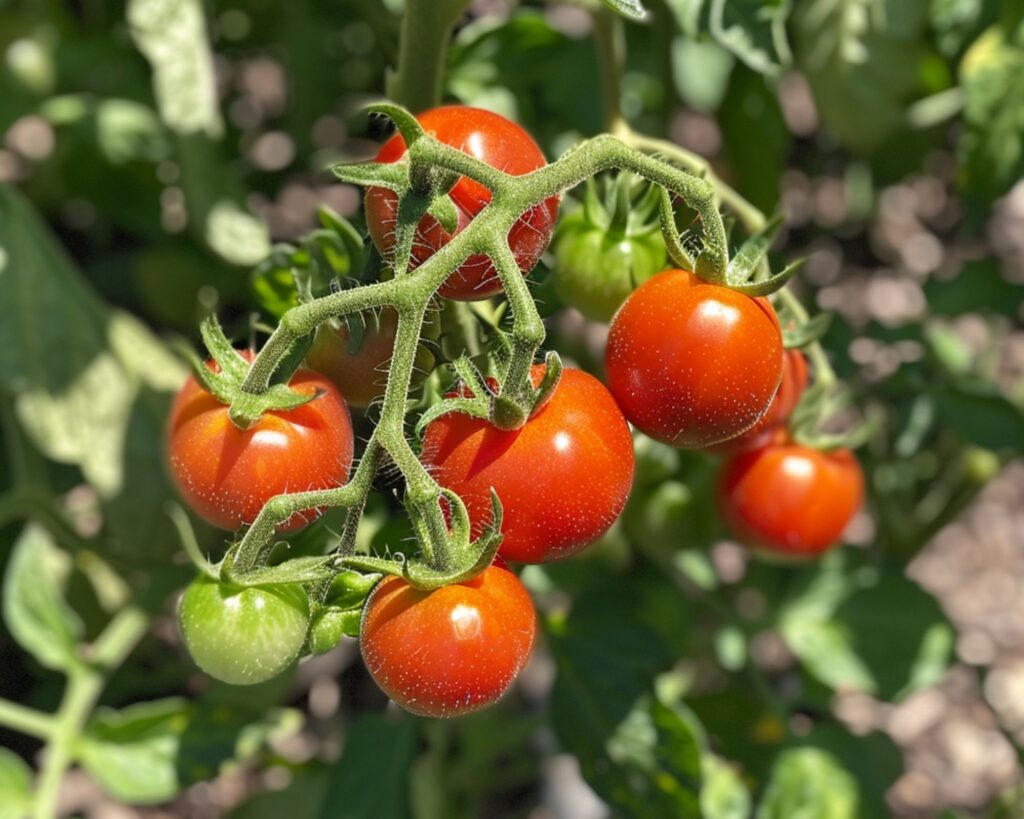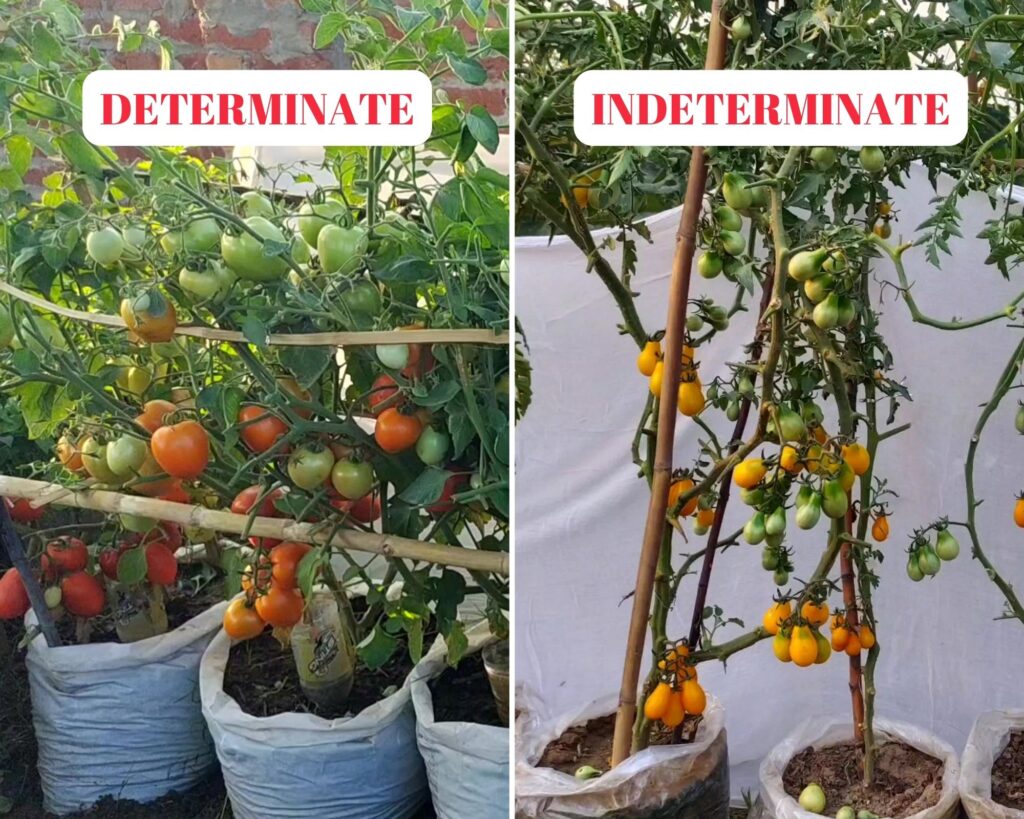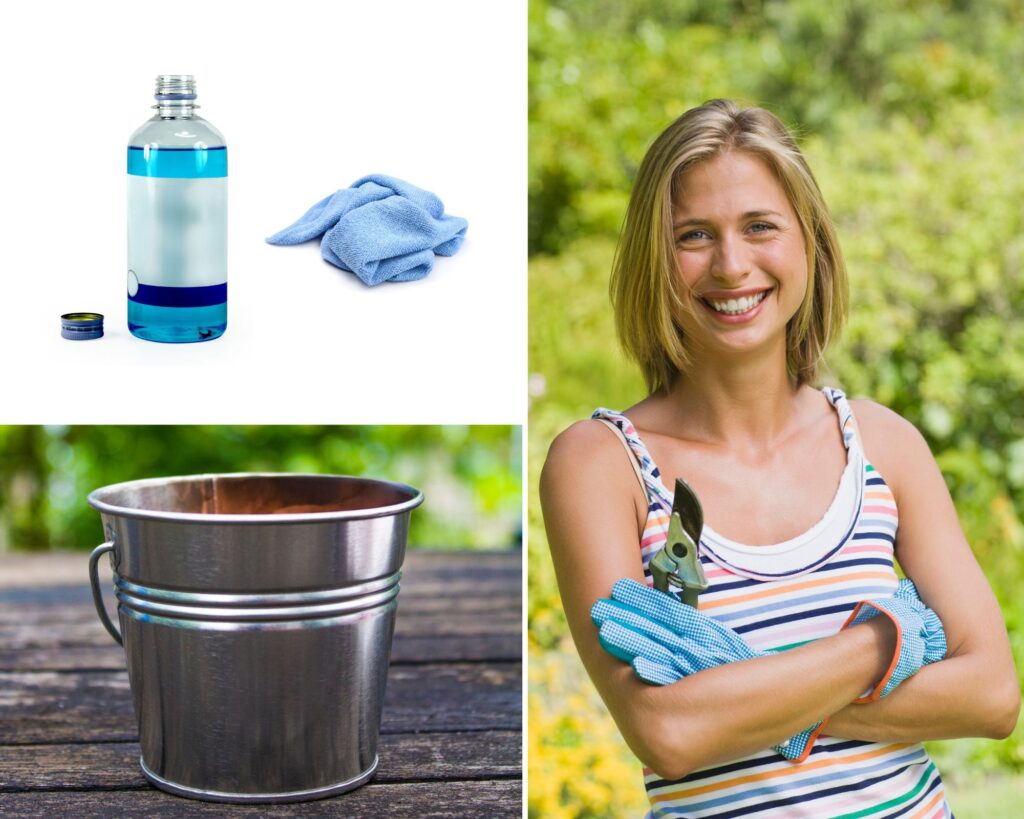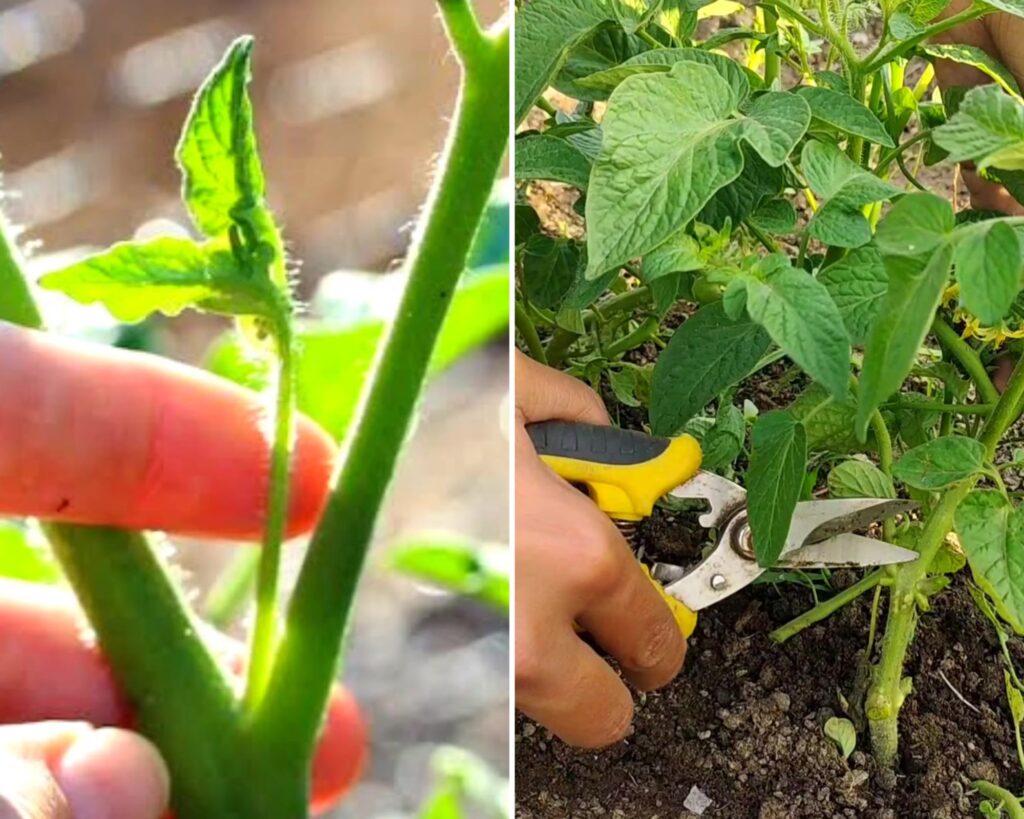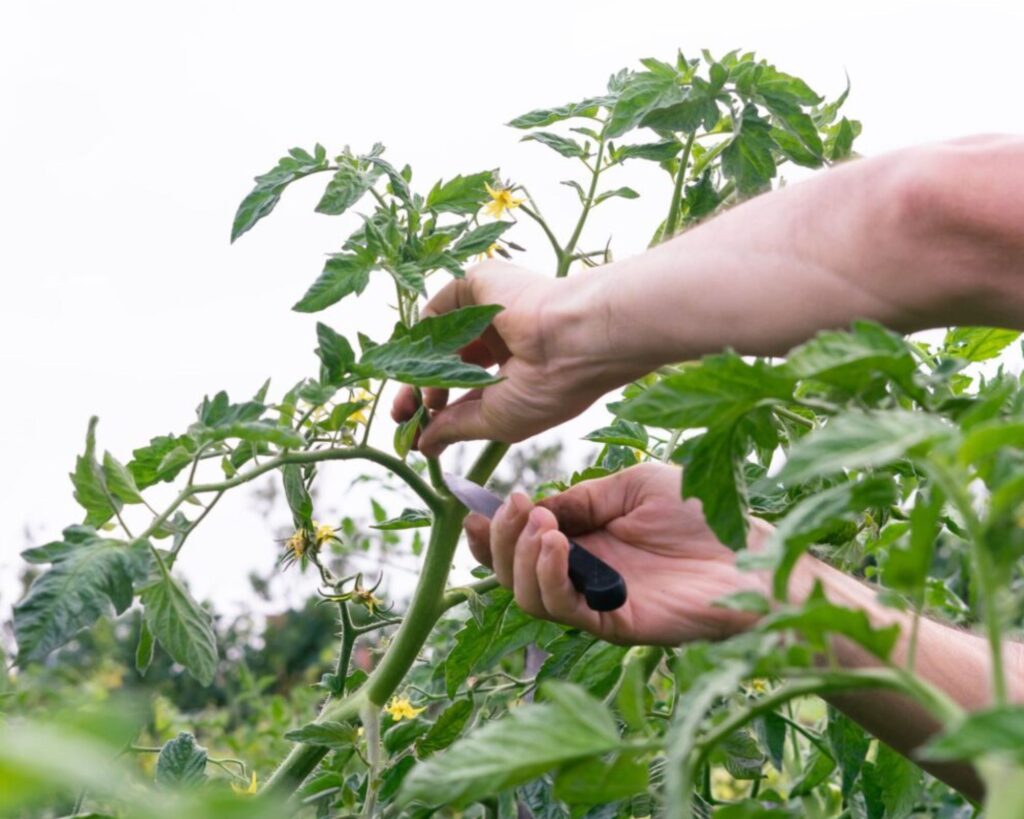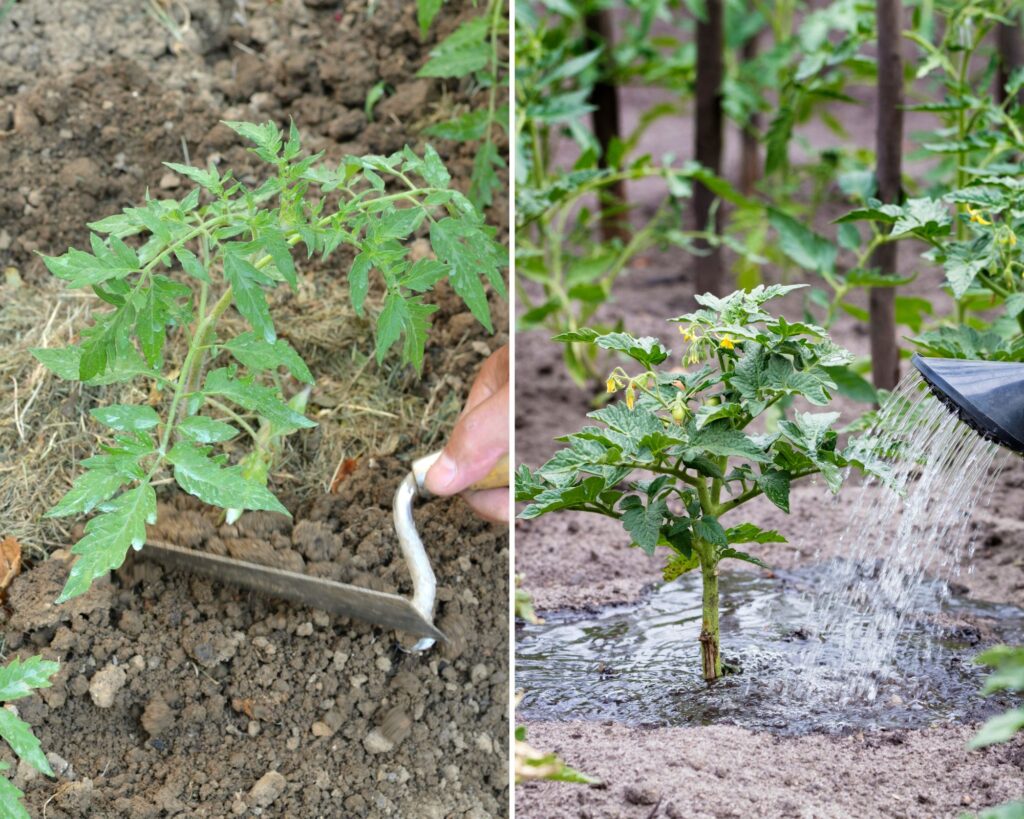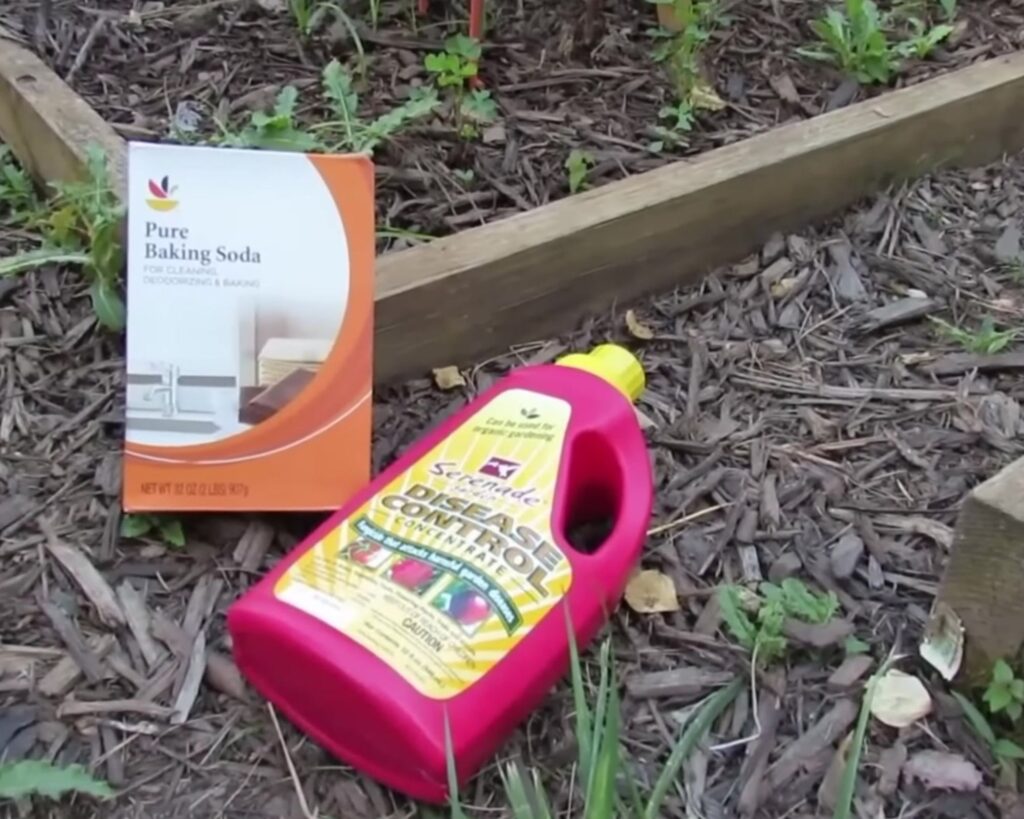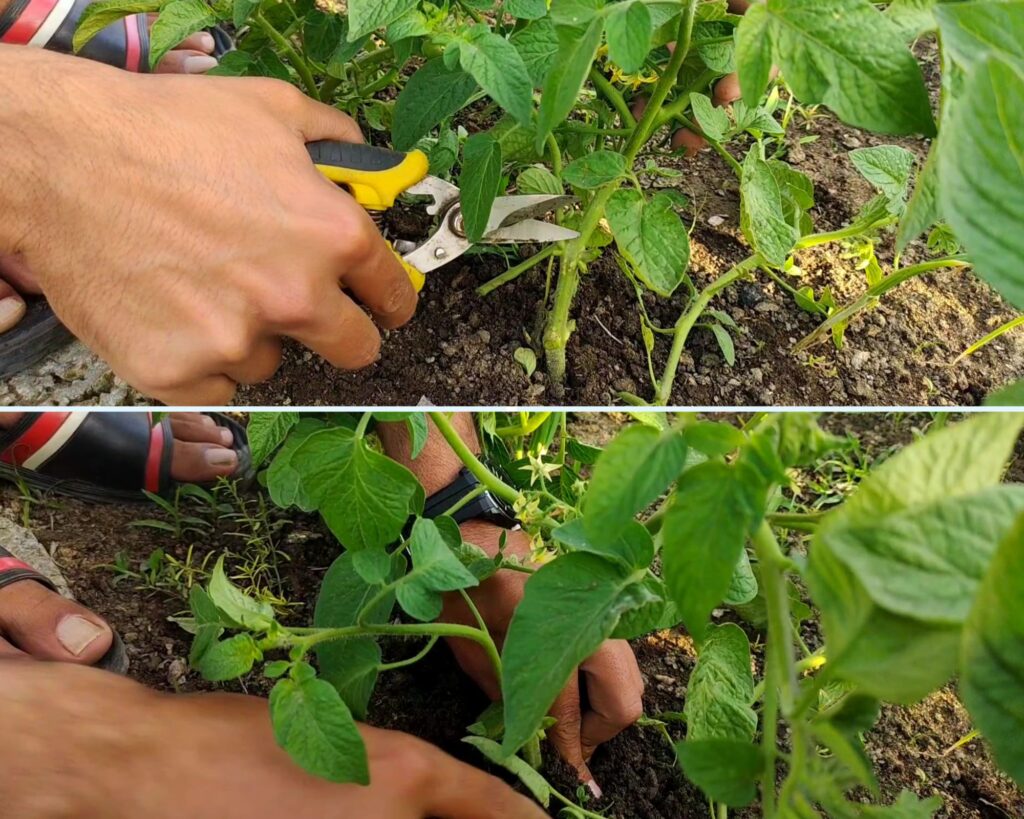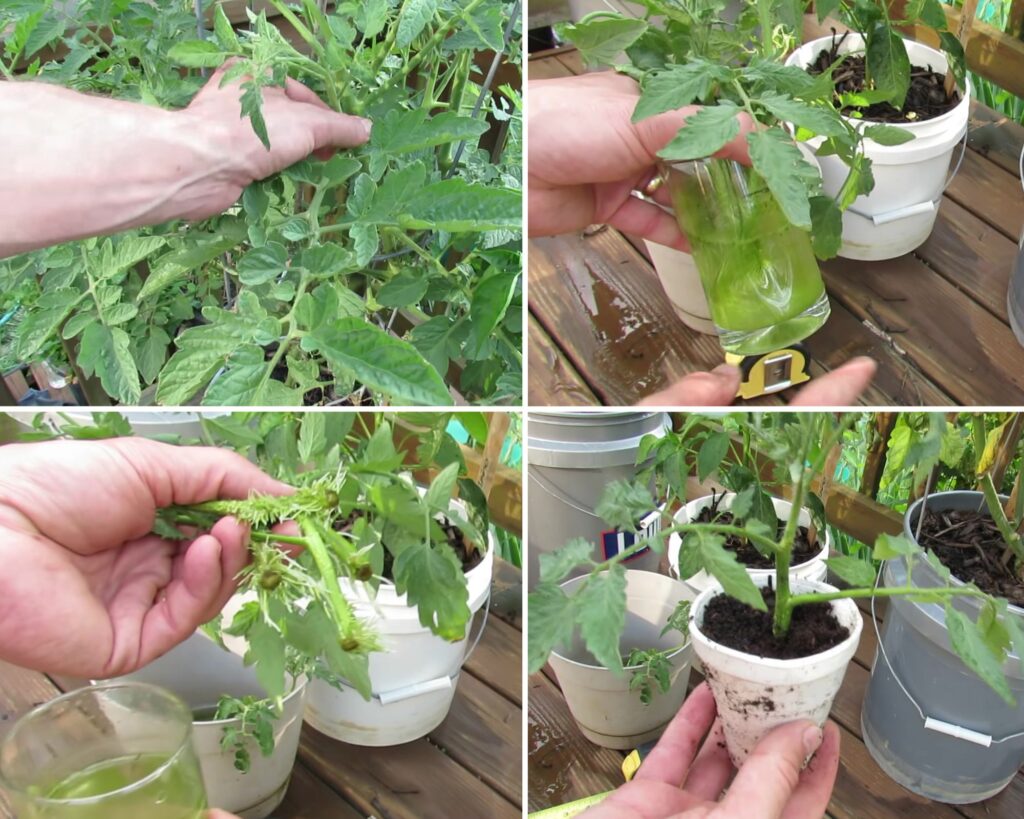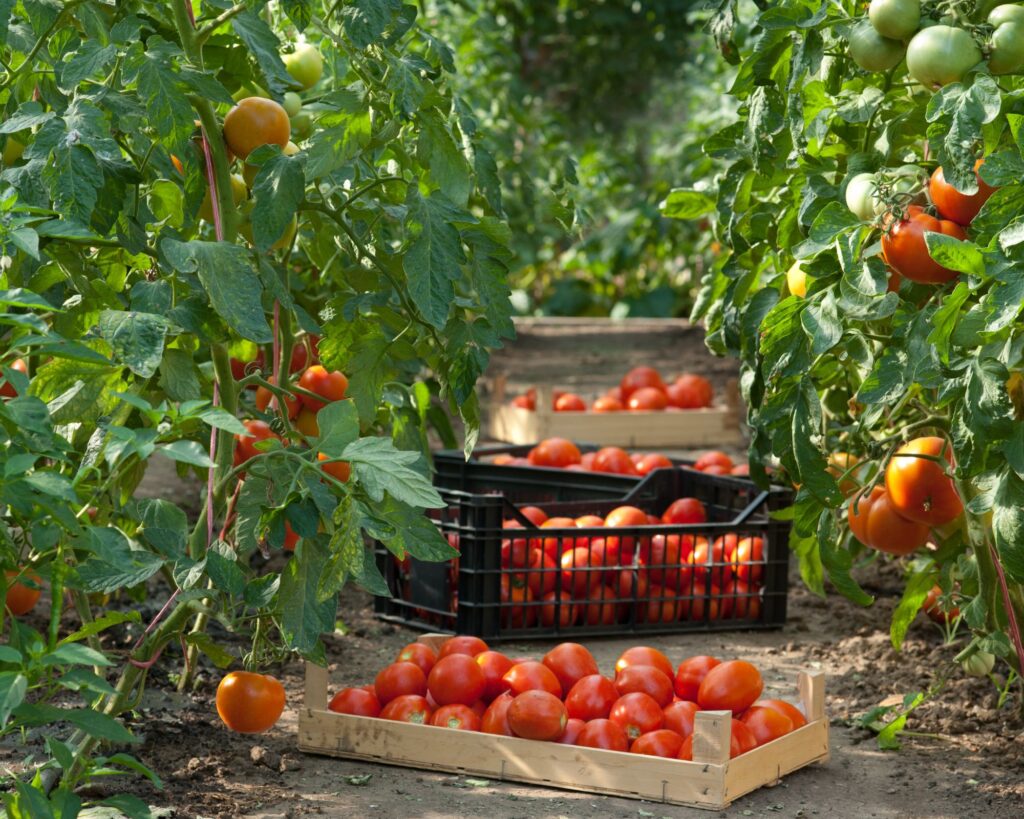Ever dreamt of plucking plump, juicy tomatoes straight from your garden? Imagine the pride of nurturing vibrant tomato plants that yield bountiful, luscious fruits. The secret to achieving this lies in a simple yet transformative technique: pruning.
By mastering the art of pruning, you can turn your tomato plants into prolific producers, ensuring they focus their energy on growing delectable tomatoes rather than a jungle of leaves.
Curious about which parts to prune? It all comes down to managing those sneaky suckers – the tiny shoots that sprout between the main stem and the branches.
Eliminating these will not only keep your plants from turning into an overgrown mess but also direct essential nutrients straight to your developing tomatoes.
Pruning isn’t just about boosting your harvest; it simplifies your gardening life. With well-pruned plants, you’ll find it a breeze to spot and pick ripe tomatoes.
Ready to transform your tomato-growing experience? Let’s dive into the details and unlock the secrets to a thriving tomato garden!
Understanding Tomato Pruning Basics
Pruning tomatoes boosts fruit production and ensures healthier plants. Different tomato varieties may require different pruning methods to get the best results.
Benefits of Pruning
Pruning helps tomato plants focus their energy on producing fruit rather than extra foliage. Removing unnecessary leaves and suckers can improve air circulation, reducing the risk of diseases.
Better airflow and sun exposure can lead to sweeter and larger tomatoes. Trimmed plants also make harvesting easier and more efficient.
Different Types of Tomato Plants
Tomato plants are generally classified into two types:
- determinate and
- indeterminate tomato plants.
Determinate tomatoes grow to a certain height and stop, making them easier to manage with minimal pruning.
Indeterminate tomatoes continue to grow throughout the season and benefit more from regular pruning to control their size and increase fruit yield.
Getting Started With Pruning
Pruning tomatoes is crucial for healthy growth and a bountiful harvest. Focus on timing and the right tools for the best results.
Best Time to Prune
The ideal time to start pruning is when your tomato plants reach about 18 inches in height. Look for the first flowers, as this is usually a good indicator that the plant is ready.
Prune in the early morning or late evening to avoid stressing the plant during the hot parts of the day.
Regularly prune suckers, the small shoots that grow between the main stem and branches. Removing suckers ensures the plant directs energy to fruit production rather than unnecessary foliage.
Tools You’ll Need
Having the right tools makes pruning easier and more effective. You’ll need a pair of sharp, clean pruning shears to make precise cuts.
A pair of gardening gloves can protect your hands from potential irritants. It’s also useful to have a clean cloth to wipe your tools before and after use, preventing the spread of diseases between plants.
Sterilize your shears with rubbing alcohol to minimize the risk of spreading pathogens. Keep a small bucket or bag handy for collecting pruned foliage.
Step-by-Step Pruning Guide
Pruning tomatoes involves the careful removal of certain parts of the plant to encourage better fruit production, healthier growth, and more manageable plants. This guide covers the key areas you should focus on to ensure a massive harvest.
Identifying Suckers and Leaves to Prune
Suckers are small shoots that grow in the leaf axils, the space between the main stem and the leaf stem. These should be removed as they consume nutrients without producing fruit.
Recognize suckers by looking for new branches forming between a leaf and the main stem.
Cut off any leaves that touch the ground to prevent disease. Use sharp, clean tools to avoid plant damage. Focus on the lower part of the plant initially and keep it leaf-free.
Techniques for Pruning for Optimal Growth
Start pruning early in the growing season to shape the plant and direct energy to fruit production.
Remove suckers when they’re small, ideally less than two inches long. This minimizes the stress on the plant.
Pinch suckers off with your fingers or use pruners for larger ones. Remove only a few suckers at a time to avoid shocking the plant.
Aim to keep the plant open and well-ventilated to reduce disease risk.
Maintaining Plant Health After Pruning
After pruning, monitor your plant closely. Water the plant at the base to avoid wetting the leaves, which can lead to diseases. Fertilize as needed to support growth and fruit production.
Check regularly for any signs of disease or pests. Keeping the plant healthy ensures it recovers quickly and continues to produce a large harvest. Prune throughout the season as needed to maintain its shape and health.
Advanced Tips for a Massive Harvest
For a thriving garden, focus on managing plant stress effectively and optimizing your watering and feeding routine after you’ve pruned your tomatoes.
Stress Management for Tomato Plants
Tomato plants can get stressed from heat, pests, or improper pruning, affecting their fruit yield. Keep your plants cool by providing shade during the hottest parts of the day.
Use shade cloths or plant tomatoes where they receive morning sun and afternoon shade.
Control pests like aphids and tomato hornworms using natural methods. Introduce beneficial insects like ladybugs or use neem oil.
Prune wisely – remove only the necessary branches to ensure good airflow and light penetration without over-stressing the plants.
Keep an eye on your plants’ health. Signs of stress include wilting, yellowing leaves, or underdeveloped fruits. When you spot stress, act quickly to mitigate its effects and help your plants bounce back.
Optimizing Watering and Feeding Post-Pruning
After pruning, your tomato plants need consistent watering to thrive. Water deeply but less frequently. Aim to keep the soil moist but not waterlogged. Ideally, water in the morning to reduce evaporation and prevent fungal diseases.
Feed your plants with a balanced fertilizer. Use a mix of nitrogen, phosphorus, and potassium suited for tomatoes. Liquid fertilizers can be helpful as they are quickly absorbed by the plants.
Mulch around the base of your plants to retain moisture and regulate soil temperature. This practice also reduces weed growth, which can compete with your tomato plants for nutrients and water.
Compost tea or fish emulsion added to your watering routine can provide extra nutrients, promoting vigorous growth and abundant fruiting.
Common Pruning Mistakes to Avoid
Avoiding common mistakes can make your pruning efforts more effective and prevent potential damage to your plants.
Over-Pruning
While pruning is essential, it’s easy to get carried away. Removing too many leaves and stems can weaken the plant and expose fruits to sunscald. Always leave some foliage to protect the developing fruits and maintain the plant’s health.
Pruning at the Wrong Time
Timing is crucial when pruning. Pruning during the hottest part of the day can stress the plant. Similarly, late-season pruning should be done carefully to avoid removing foliage that protects ripening fruits from direct sunlight.
Ignoring Disease and Pests
Regular inspection of your plants is necessary. Pruning diseased or pest-infested parts promptly can prevent the spread to the rest of the plant. Always sterilize your pruning tools before and after use to minimize the risk of disease transmission.
The Role of Training in Tomato Pruning
Training your tomato plants to grow in specific patterns can enhance the benefits of pruning and improve overall yield.
Using Stakes and Cages
Stakes and cages provide support and help in maintaining the shape of the plant. This support system makes pruning easier and keeps the plant upright, ensuring better air circulation and sunlight exposure.
Trellising Techniques
Trellising is another effective method for training tomato plants. By guiding the plants to grow along a trellis, you can manage their growth more efficiently and make harvesting simpler.
Regularly tie the main stem to the trellis to keep the plant growing vertically.
Cloning Suckers for Continuous Supply
Cloning allows you to grow more tomato plants that are genetically identical to the parent plant. This can be particularly useful if you have a variety that is highly productive and disease-resistant.
Healthy suckers can be used to propagate new tomato plants, ensuring a continuous supply throughout the season. This method is a cost-effective way to expand your tomato garden without purchasing new plants.
Select a 6-inch sucker from between a main production stem and a leaf: Ensure it’s healthy, disease-free, and not flowering.
Cut the Sucker: Remove the lower leaves of the sucker. Root the Sucker in Water
Place the sucker in a jar filled with warm water: Initially, keep the jar out of direct sunlight to allow the plant to recover. After a few days, move the jar to a sunny spot. Change the water every few days, always using warm water.
Transplant the Rooted Sucker: Monitor the roots through the jar. Once they are about an inch (2.5 cm) long (usually after 1-2 weeks), the sucker is ready for transplanting.
Pruning tomato plants may seem like a chore, but the rewards are well worth the effort. By following these steps and tips, you can ensure a massive, healthy harvest of delicious tomatoes.
Remember to be consistent with your pruning and always monitor your plants for signs of stress or disease.
